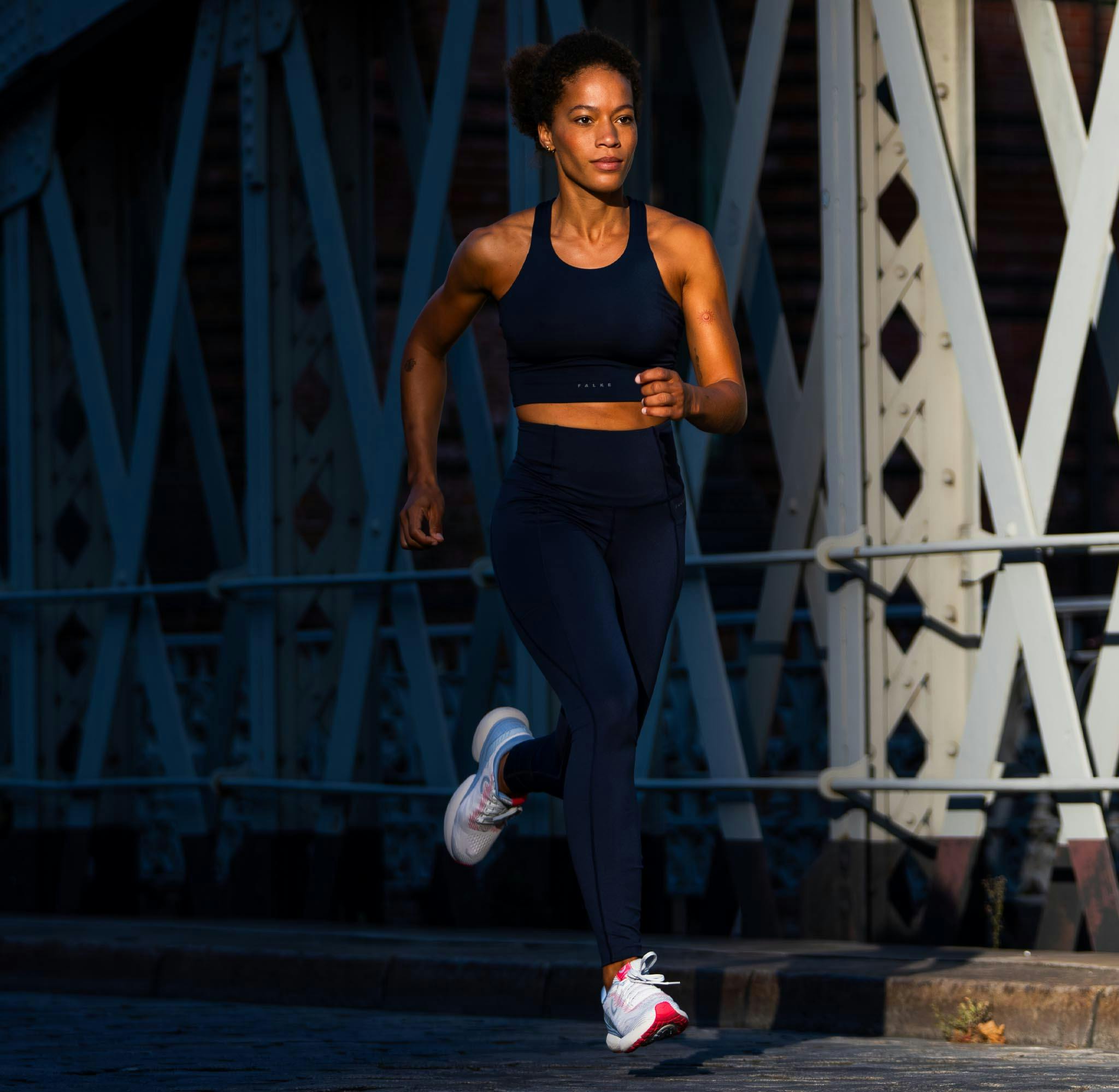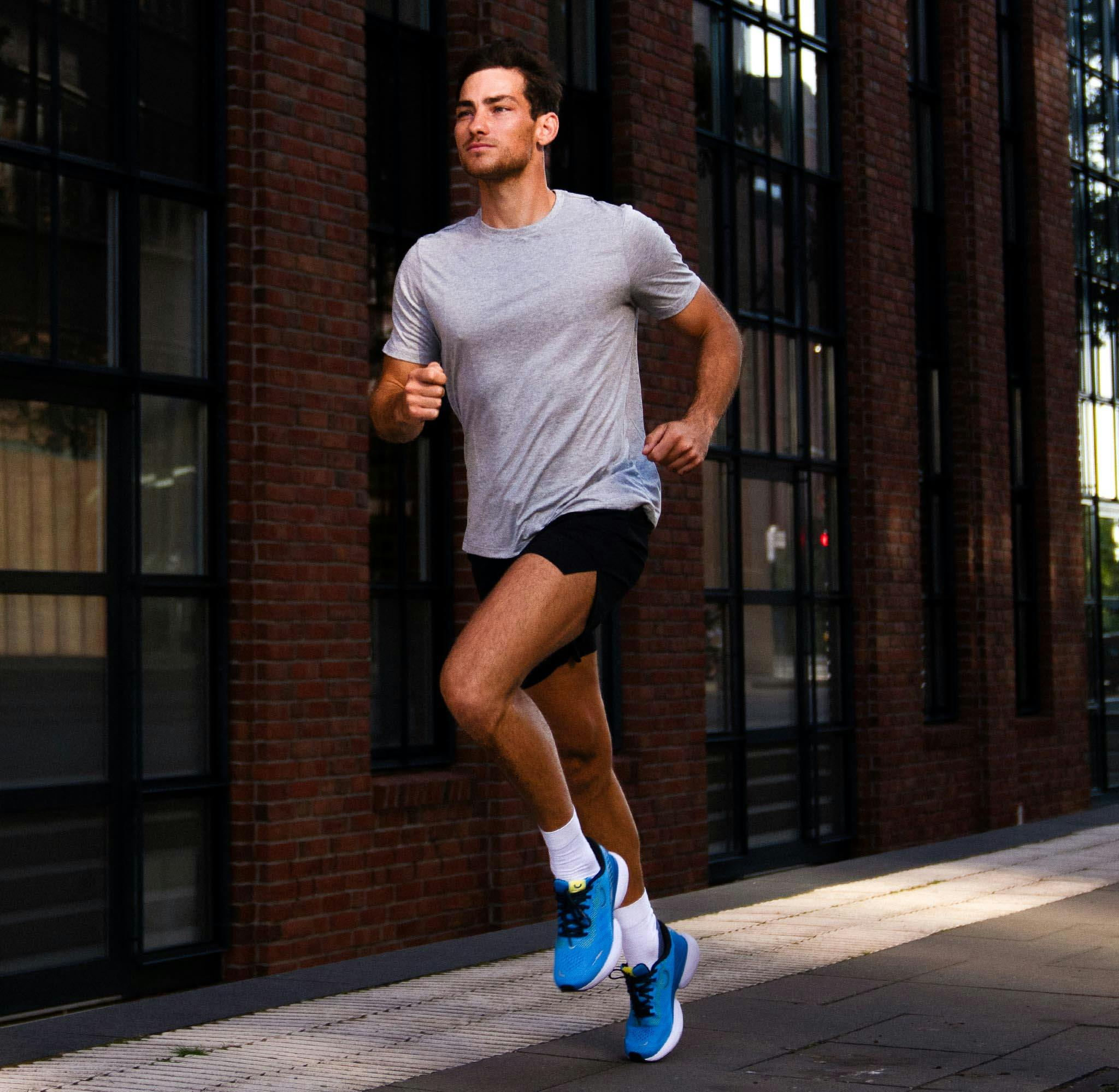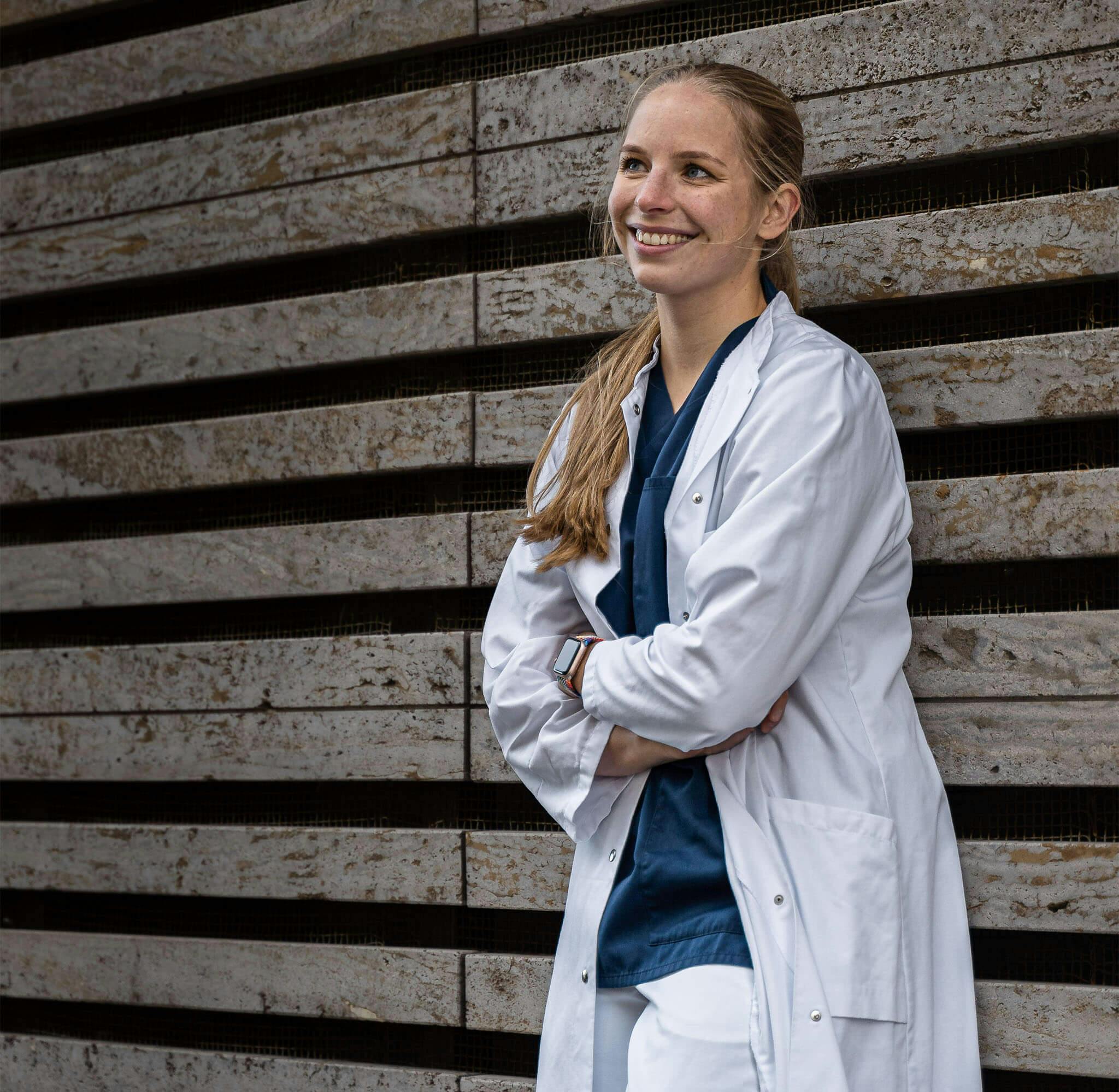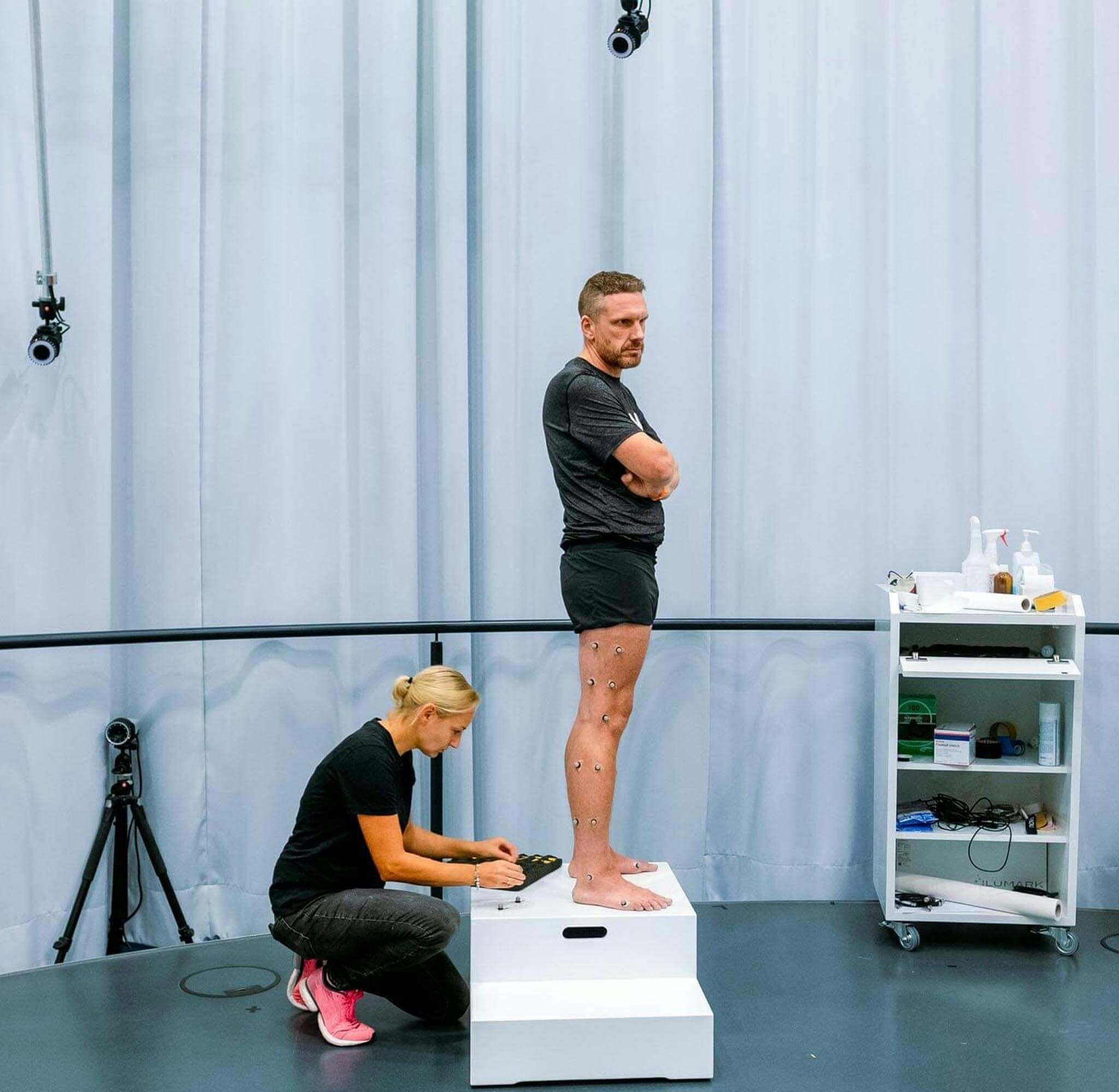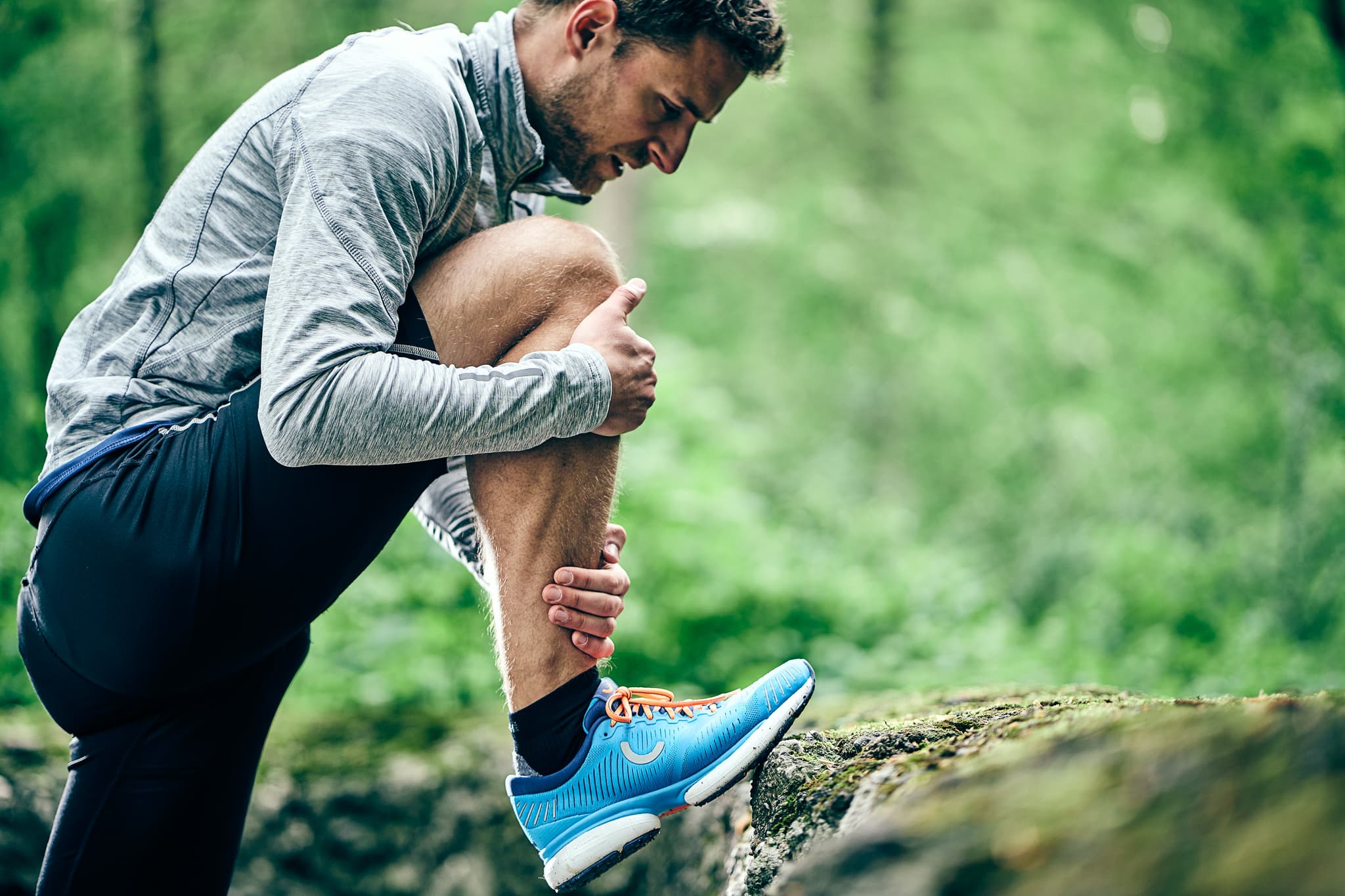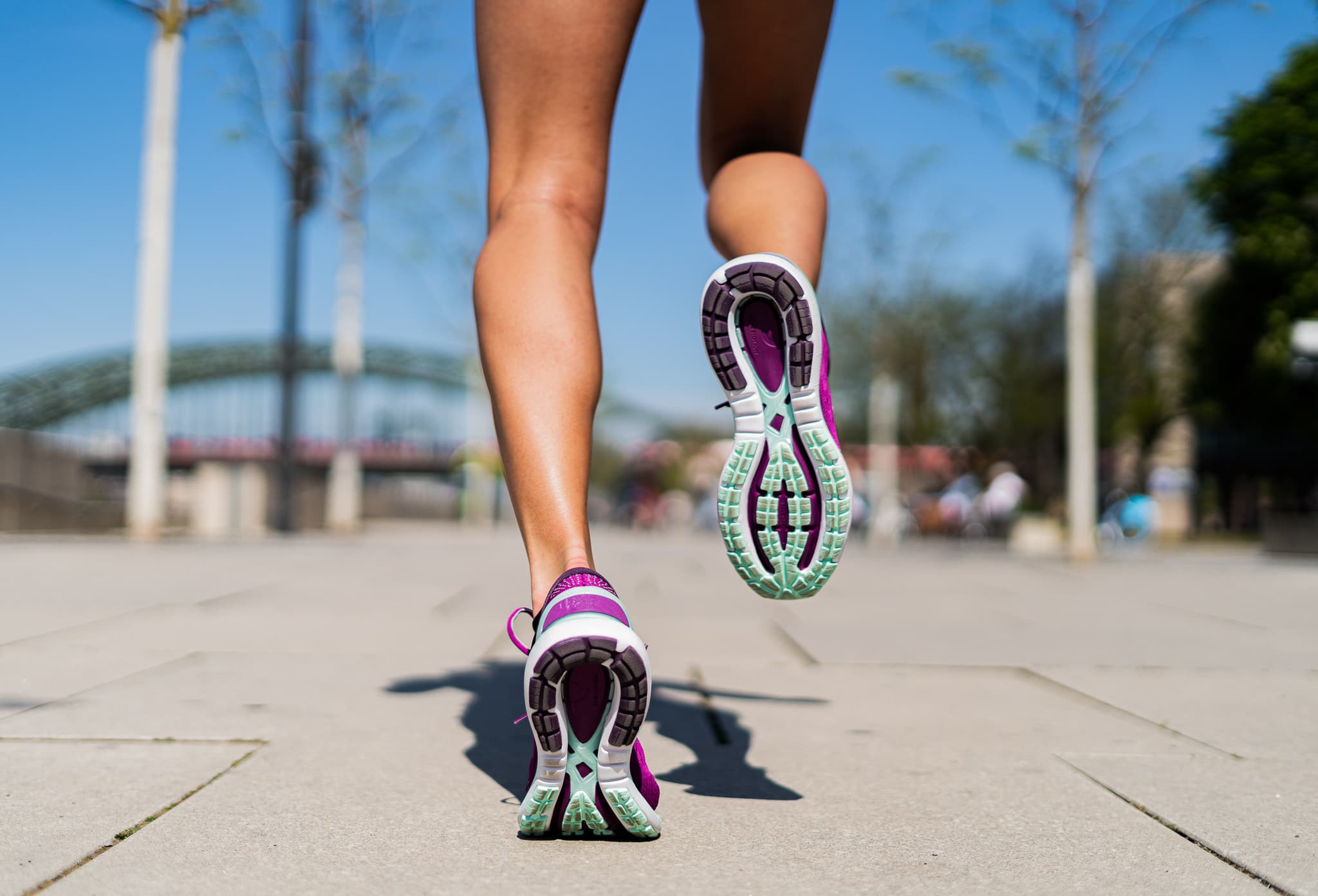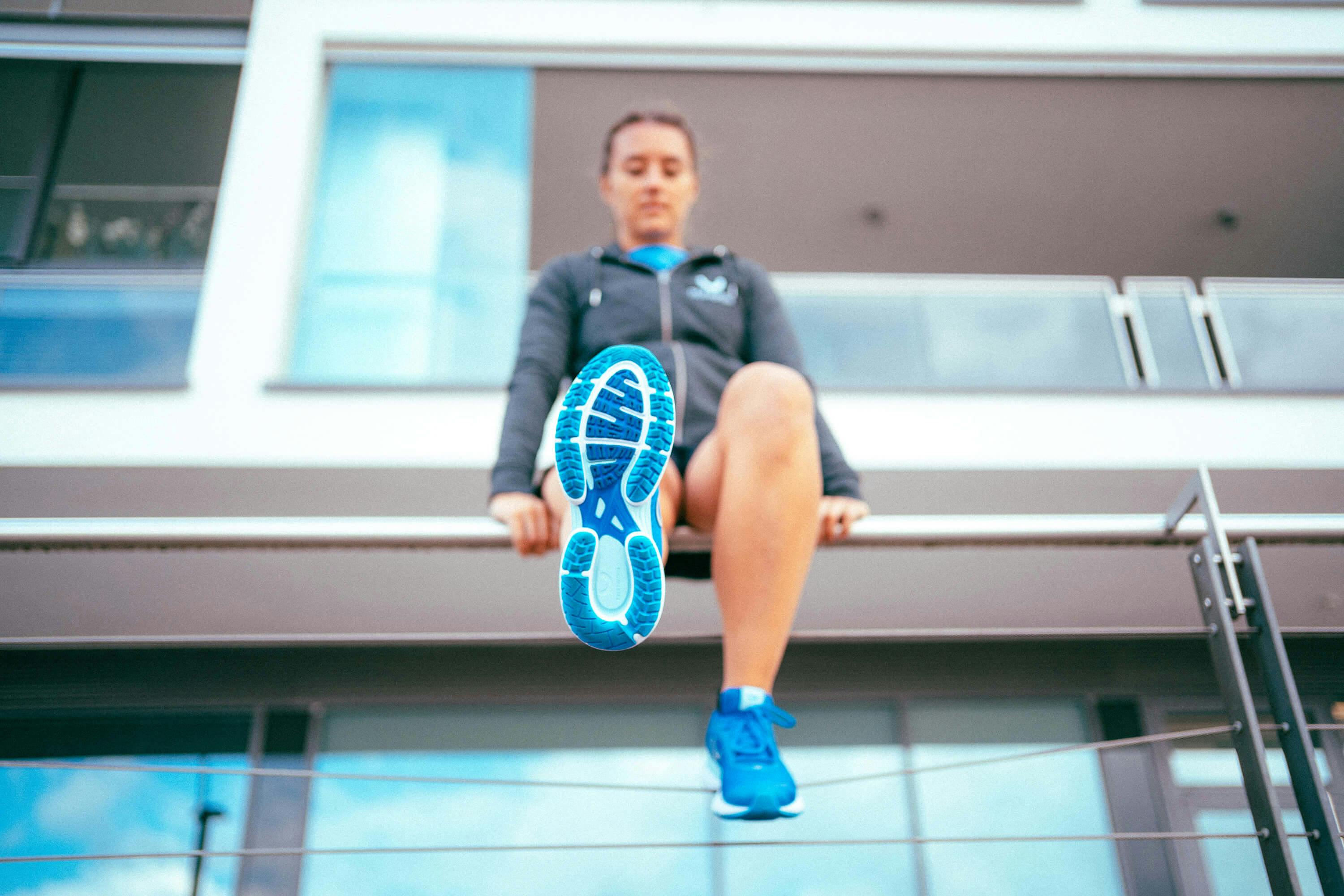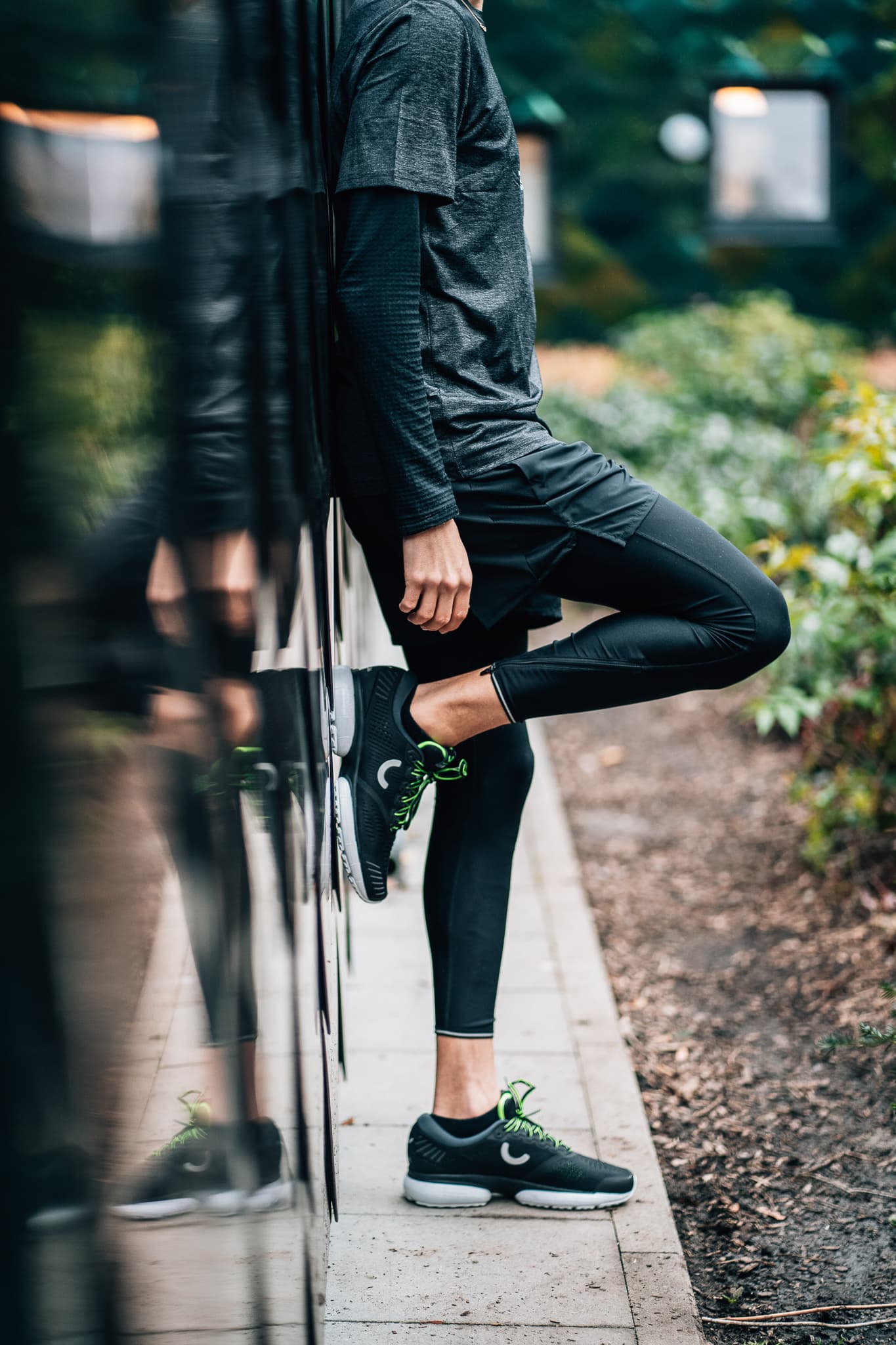
Runner’s Knee: When the Knee Suddenly Hurts While You Run
1st October 2021
ITBS – aka the pain that paralyzes runners. They are worried to suffer from so-called runner’s knee when, all of a sudden, the outside of the knee hurts. It pinches. It twinges. And for most runners, that puts an end to their training for the time being. But how does runner’s knee develop in the first place – and how can we prevent and treat it? Prof. Dr. Gert-Peter Brüggemann explains how ITBS is related to our biomechanical musculoskeletal system.
Content:
What is runner’s knee – and what are typical ITBS symptoms?
When the knee hurts while running: is it really runner’s knee?
Biomechanics and runner’s knee: the biomechanical interaction of our body
Are the running shoes to blame – or are there other reasons for runner’s knee?
Is it necessary to take a break? This helps in acute cases of runner’s knee
What helps against runner’s knee in the long term and how can I prevent it?
The biomechanical running shoe approach against runner’s knee
When the runner’s knee no longer hurts: when can we start running again?
For the past 30 minutes, we’ve been reeling off the miles of our weekly run. The evening sun is shining, the birds are chirping. Everything is just fine, we think – until suddenly the outside of our knee pulls and twinges. Every step feels like someone is hammering dozens of nails into our knee. Instead of being a welcome break from everyday life, our running routine becomes pure torture. Runner’s knee, also known as iliotibial band syndrome (ITBS), is a real horror scenario for many runners.
If we suffer from knee pain while running, most of us can barely make it home hobbling. Often, and this is so deceptive, the pain in the knee joint disappears all by itself when those affected walk slowly. The problem is that runner’s knee doesn’t let go so easily – and can reappear very quickly.
For runner’s knee to actually get better, runners should act as early as possible. But that’s easier said than done – because they don’t know what causes it. That’s why we talked to Prof. Dr. Gert-Peter Brüggemann. The biomechanist and co-founder of True Motion explains the possible causes of runner’s knee – and the role running shoes play in this.
What is runner’s knee – and what are typical ITBS symptoms?
It’s rather obvious that runner’s knee is a typical sign of overload. “Specifically, a fascial cord is affected here, the tractus iliotibialis,” explains biomechanics professor Brüggemann. Runner’s knee is therefore also known as iliotibial band syndrome (ITBS) or tractus iliotibialis syndrome.
This so-called tractus iliotibialis is a contact point between muscles and bones. Like a rubber band, this fascia, which is affected in runner’s knee, stretches laterally across the outside of the knee. In this way, it connects the iliac crest – the laterally palpable protrusion of the hip – and the uppermost attachment of the tibia.
This fascia is thus an important component of the human musculoskeletal system. Its task is to stabilize the leg axis and the hip. This is important because our body weight is constantly bearing down on our legs – and the weight thus bends them outward under tension like a stick. The ligamentous structures that connect the bones of the thigh and lower leg are the traction belts. They are the ones that fix our leg position. As a result, the fasciae, as part of this ligamentous structure, are exposed to the constant bending force, the so-called varus stress.
As with a tension belt, however, the tensile stress in the human body can also vary. If the belt tightens too much, the pressure increases. In concrete terms, this means that the fascia presses on the bony prominence on the outside of the thigh, the so-called epicondyle. If the compressed fascia also moves back and forth, the irritation increases
The problem: when running, this back-and-forth movement is unavoidable. At the same time, it is exactly what can ultimately lead to the pulling pain – a classic inflammation. This always occurs when the fascia is injured in the long term during the movements – like a rope that scrapes against a ledge for a long time.
The result is a stabbing pain on the outside of the knee at the tractus iliotibialis – runner’s knee. However, since the pain often occurs first and usually only during movement, athletes tend to forget that they have knee problems. The point in time when the knee joint actually starts to hurt is different for every runner. Some feel the irritated fascia after just a few meters – others, on the other hand, can still do some training without problems.
When the knee hurts while running: is it really runner’s knee?
Only specialists should diagnose a runner’s knee. If runners describe their symptoms, orthopedists can usually diagnose ITBS quickly. In the process, doctors rule out other injuries to the knee that cause similar symptoms. Such conditions include:
cartilage damage in the knee joint,
irritation or injury of the outer meniscus,
osteoarthritis of the outer part of the knee joint,
osteoarthritis of the hip,
a torn muscle,
a fatigue fracture.
In order to be able to distinguish runner’s knee from the above-mentioned injuries, the specialists ask the runners specific questions before treatment. To be absolutely sure, the doctor also palpates the affected area and moves the knee. If patients complain of pain, the diagnosis is often clear – ITBS. Specialists can then begin targeted therapy and treatment of the iliotibial tract.
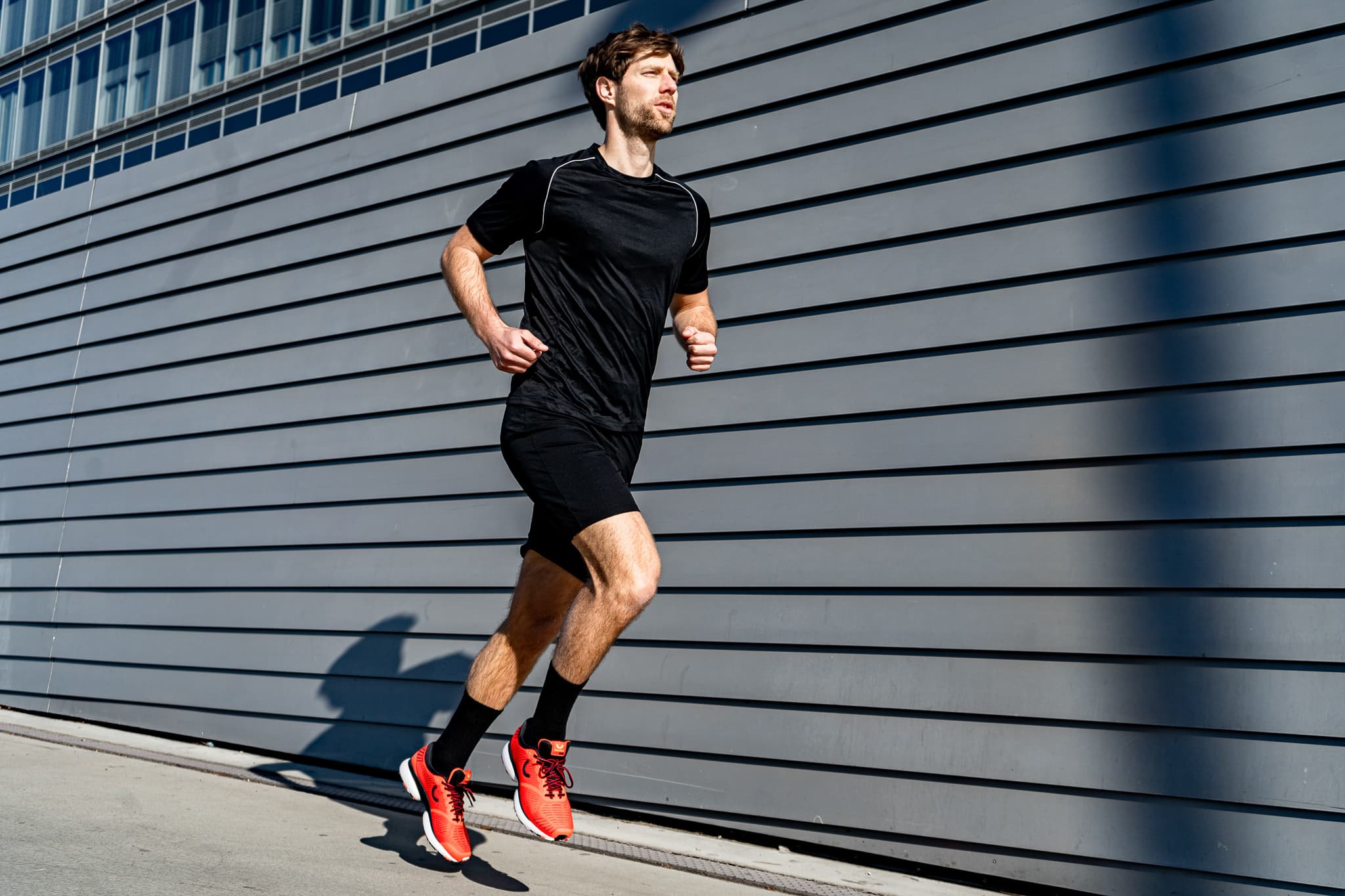
Biomechanics and runner’s knee: the biomechanical interaction of our body
The biomechanical interaction of our body is crucial for the development of runner’s knee. Actually, all joints of our body should interact optimally with each other. But this perfect world is often disturbed. As a result, if even one link in the chain changes slightly, this has an immediate effect on the entire body and its course of movement. This is comparable to a game of dominoes.
"The foot needs a soft cushion that smoothly absorbs the inwardly catapulted foot."
As a result, the position of the lower leg in relation to the upper leg is altered. Right in the middle is the knee. This biomechanical interaction extends to the hip – and can ultimately even influence the back.
If one component of our body changes, our entire movement sequence changes. That’s why it’s important to pay attention to a balance of forces.
This is especially true when it comes to ITBS; when the foot touches the ground during exercise, it is primarily the outside of the foot that hits the ground. It is over this side that we roll our foot with every step. People who are prone to runner’s knee put too much force on the outside of the foot. Traditional running shoes with their angular outsoles further reinforce this effect. Like a catapult, explains biomechanist Brüggemann, the foot is then pushed inward in the opposite direction – with every step. This leads to unwanted leverage forces in the knee, the so-called bending force.
There are two approaches to solving this problem, says Prof. Brüggemann:
The foot needs a soft cushion that smoothly absorbs the inwardly catapulted foot.
The foot is centered from the start so that the bending force does not push the foot inward in the first place.
Biomechanically developed running shoes draw on this knowledge. They center the forces as soon as the foot touches down – thus counteracting the cause of runner’s knee. True Motion’s U-TECH™ technology also achieves this goal. It centers the forces and thus also the knee in a natural way.
One thing is certain, knee pain while running is a sign of imbalance in the knee. However, if runners feel no pain or discomfort, they don’t need to change their shoe, says Prof. Brüggemann.
Are the running shoes to blame – or are there other reasons for runner’s knee?
The problem is that there is no single trigger for ITBS. Rather, in most cases, several factors come together to cause runner’s knee and the associated problems. They influence each other – and set a biomechanical domino effect in motion. It is therefore all the more important for runners to be aware of the various causes. Then they can specifically look for individual triggers – and start therapy and treatment together with specialists. These are the most common causes of ITBS:
Overload: Unusually intense loads during sports – such as long running sessions – overload muscles and fasciae. The body is not used to the load and therefore not sufficiently adapted to it. More precisely this means that in the long term the muscle on the outside of the leg lacks the strength to fight against the bending force. This increases even more and causes greater tension in the tendon.
Wrong running technique: Even the most skilled runners can develop runner’s knee with the wrong technique in training. Incorrect running technique forces the fascia and tendons to perform tasks they were not created for. Unintended leverage forces are created, increasing the bending force in the leg.
Malposition of the leg axis: People who suffer from a malpositioned leg are susceptible to runner’s knee. Especially in the so-called bow-leg position (also: genu varum), the tension of the fasciae on the outside of the knee is increased. Similar to the misalignment, the natural biomechanics of the leg axis are disturbed at many points. As a result, the knee is more susceptible to the typical complaints associated with running.
Inappropriate running surface: A surface that is too hard, such as asphalt or sloping roads, places particularly intensive stress on the leg muscles. The force exerted on the joints is not cushioned and unforgiving. This further aggravates already faulty biomechanics.
Unsuitable running shoes: As already mentioned, looking at the shoes is particularly important. Unsuitable running shoes, such as rigid, non-flexible running shoes with overly hard cushioning and running shoes with angular outsoles, force the feet into an unnatural posture – creating anatomical imbalances. This significantly increases the catapult effect – or leads to the body not being able to absorb it in the first place. As a result, feet, knees, and hips lose their natural range of motion. This results in poor posture during running. If runners have knee pain during sports, it can therefore make sense to change shoes.
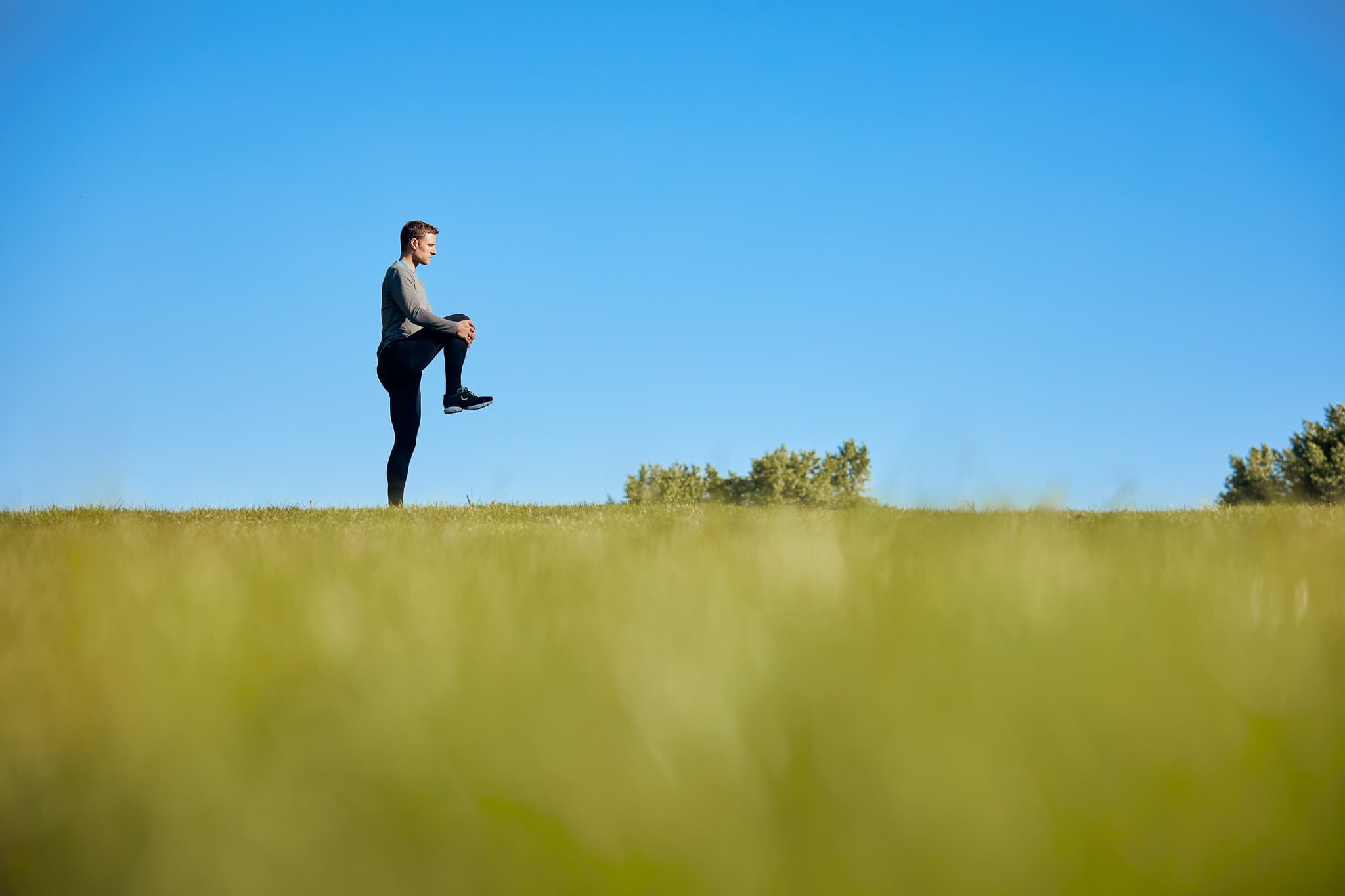
Is it necessary to take a break? This helps in acute cases of runner’s knee
Since runner’s knee is the result of overuse, the first thing that helps with acute knee pain while running is taking a break from running. But this alone is sometimes not enough. Although the pain often subsides when we stop putting weight on our knee, there are exceptions. Then runner’s knee hurts acutely, even at rest.
A suitable therapy in these cases is to put a cold pack on the aching knee and rub it with anti-inflammatory ointments such as Voltaren. Both help reduce the symptoms of inflammation in the knee. The swelling on the outside of the knee goes down.
Since it is ultimately a hardened and tight fascia that triggers the pain of runner’s knee, stretching and fascia exercises are particularly helpful. Physical therapists show us which exercises work best. They also help us to perform them correctly.
Stretching
Stretching exercises are an effective helper when it comes to lowering tension on muscles, tendons, and fascia. The tractus iliotibialis – the fascia that is tense in runner’s knee – is connected to three muscles. All three of these muscles are located in the gluteus and on the outside of the leg. Stretching exercises help apply traction to the fascia. This pulls the muscles that are attached to the fascia.
Fascia training
In addition to stretching exercises, so-called fascia training also helps as an initial therapy to loosen the tractus iliotibialis again. Fascia rollers are suitable for this purpose. The targeted pressure of the fascia roller on the affected area can loosen the tension in the fascia. This is important because, after all, the overstretched fascia is the trigger of runner’s knee. Fascia training also helps restore fluid and nutrients to the tissue. This not only promotes healing, but also has a preventive effect against the development of ITBS.
As a general rule, it is a good idea to stretch before exercising and warm up the fascia before running. This helps prepare the fascia for the upcoming load and can prevent tightness.
What helps against runner’s knee in the long term and how can I prevent it?
In order to defeat runner’s knee in the long term or to ensure that it doesn’t occur in the first place, those affected need to take a closer look at the causes. Whether it’s just an unsuitable surface or a trained malposition – the triggers all have one thing in common: the right running shoes have a significant influence on the running experience.
Shoes are the link between the ground and the body. From the ground, the shoes transmit all forces to the legs. If the transmission of forces is disturbed, this is where unhealthy leverage forces originate from a biomechanical point of view – the catapult effect already described above. Both worn and improperly fitting running shoes can intensify this effect or even trigger it in the first place.
In order for the body to better fight the bending forces, it also helps to train the abductors, Prof. Dr. Brüggemann explains. The abductors are the muscles on the outside of the leg. They lift the leg laterally – and are thus the counterpart of the bending force, so to speak.
In concrete terms, this means that the abductors always counteract the bending force when the leg wants to bend outward. Accordingly, it is important to train them. However, this does not combat the cause, “but only the already existing pain and discomfort,” explains biomechanist Brüggemann.
The biomechanical running shoe approach against runner’s knee
If we complain about knee pain after running, there is an unpleasant imbalance in the body. That’s why biomechanist Brüggemann and the True Motion team have developed running shoes that distribute forces optimally throughout the body. A reinforcement at the heel of the shoe in the form of a U ensures a centered distribution of forces with every step.
The principle: on a line, each step transfers the forces from the foot to the knee and hip. Thus, all links in the chain remain in balance – and in this way significantly reduce the bending force. This also helps with runner’s knee; True Motion’s U-TECH™ technology prevents the foot from being pushed inward by centering the force. This prevents the leverage forces from occurring in the first place.
For example, a large-scale study has shown that, based on these findings, True Motion running shoes put an average of 10% less stress on the knee of runners compared to conventional neutral and stability shoes.
When the runner’s knee no longer hurts: when can we start running again?
Especially ambitious runners struggle with a long recovery from runner’s knee. The reason is that often their running break comes up too short. But a break is the most important component of healing, regardless of therapy and treatment. Because ultimately, ITBS is an overuse condition – and those affected need to give their bodies enough time to recover. It is not uncommon that the break from running needs to last more than twelve weeks.
But this is not a general ban on sports. Because even during acute runner’s knee, there are some gentle alternatives; sports like swimming or cycling put less body weight on the legs. They are therefore ideal alternatives to running.
If we have found and eliminated the cause, we can restart running after two pain-free weeks. However, we should not overdo it at the beginning. Instead, we should go about it slowly and carefully – and start training with short running sessions. If discomfort reappears, it is important to stop and take another break from running.
However, if we remain pain-free, we can gradually increase the load. As a rule of thumb, we can increase our running distance by one kilometer every one to two weeks.

NEVER RUN OUT OF
NEWS
Discover all True Motion stories – and be the first to hear about new products, promotions and events. Simply, center your run!
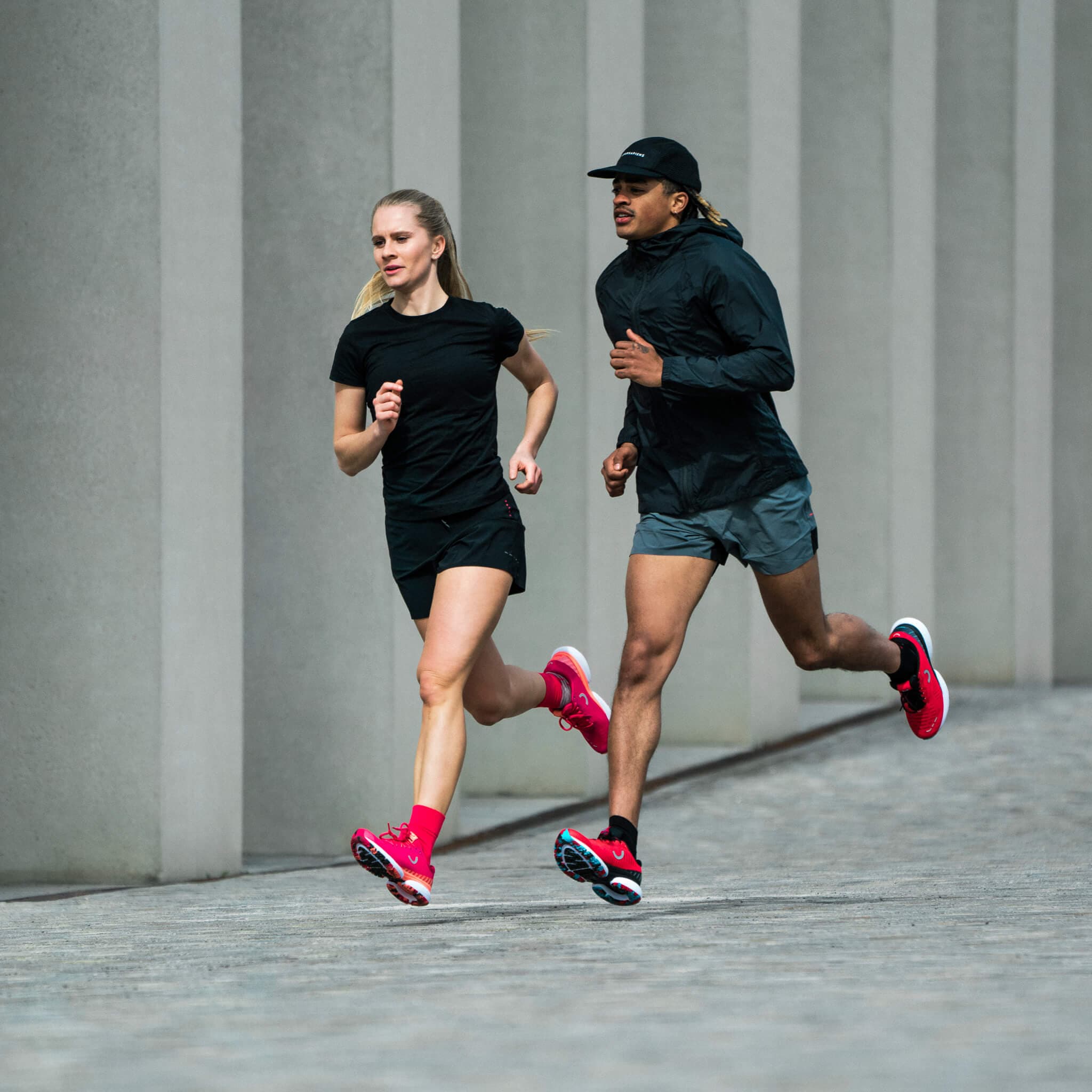
NEVER RUN OUT OF
NEWS
Discover all True Motion stories – and be the first to hear about new products, promotions and events. Simply, center your run!
READ THE NEWEST
U-RUN STORIES
Sabrina Mockenhaupt: This shoe got me running again
2025-10-31

Sabrina Mockenhaupt has achieved everything that many runners dream of. Running was and is her life, until the pain eventually became too much. Today, she is running pain-free again – this is her story.
Laura Schmidt: I have rediscovered running for myself
2025-03-07
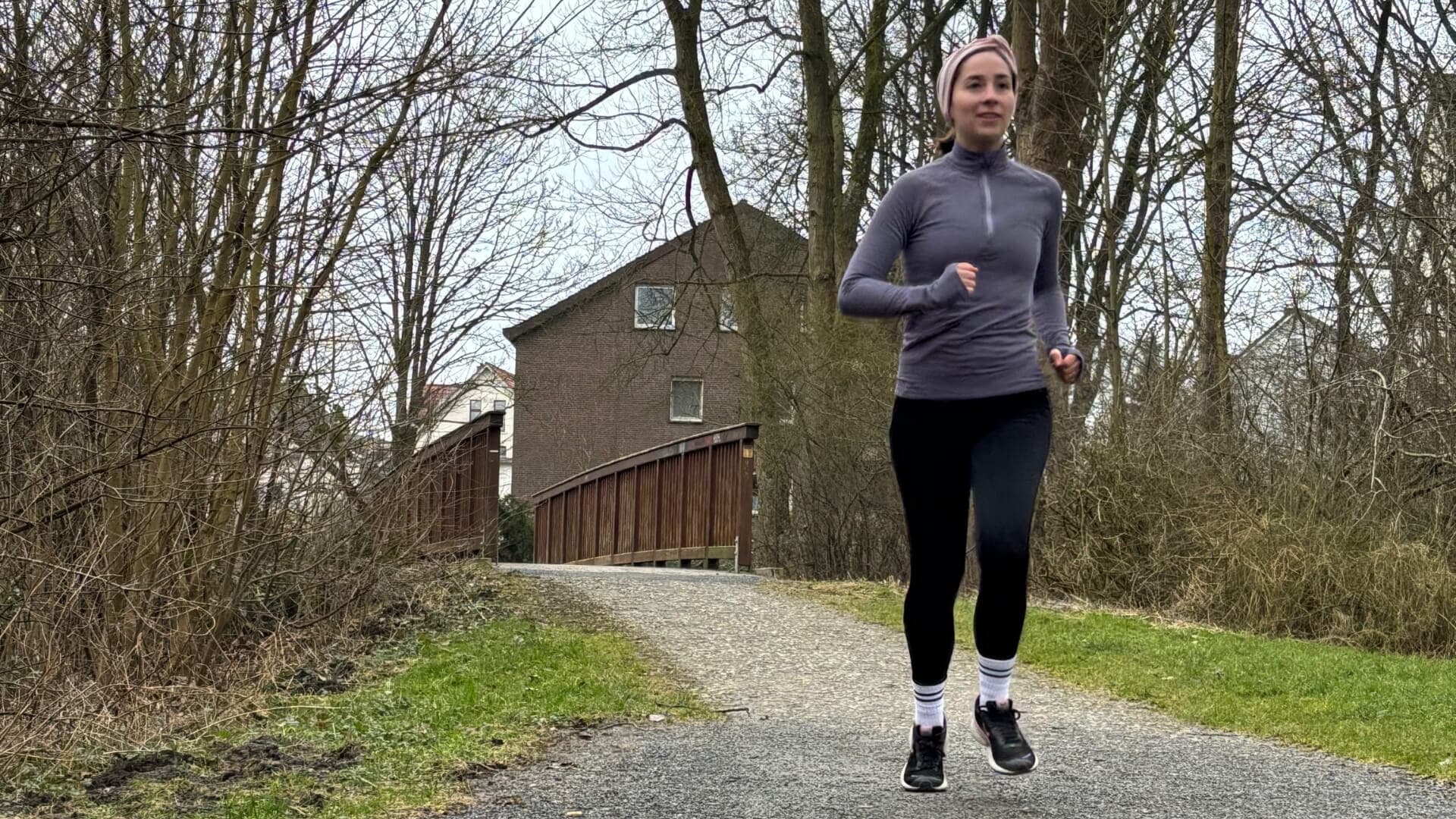
My name is Laura. I started running eight years ago – to clear my head after work. But knee pain kept me from being able to run regularly. A new pair of running shoes was finally the solution. Today I run pain-free. This is my true runner story.
READ THE NEWEST
U-RUN STORIES
Sabrina Mockenhaupt: This shoe got me running again
2025-10-31

Sabrina Mockenhaupt has achieved everything that many runners dream of. Running was and is her life, until the pain eventually became too much. Today, she is running pain-free again – this is her story.
Laura Schmidt: I have rediscovered running for myself
2025-03-07

My name is Laura. I started running eight years ago – to clear my head after work. But knee pain kept me from being able to run regularly. A new pair of running shoes was finally the solution. Today I run pain-free. This is my true runner story.
RECOMMENDED BY








RECOMMENDED BY








GET 10 % OFF YOUR FIRST ORDER!
Get your personal running updates with exclusive discounts, product news, training plans and tips for healthy running - straight to your inbox. 10% discount on your next order.
SERVICE
ABOUT US
© 2025 True Motion Running GmbH

